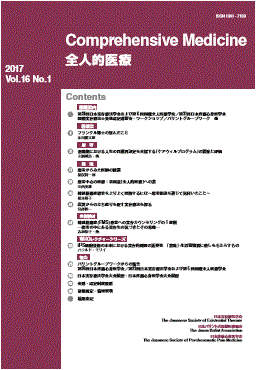Background : After practicing as a psychosomatic internist(1996), the author's workplace was gradually teemed with patients at risk of ego-dystonic lifestyles. Many of them had very low self-esteem, even lacked a sense of self-worth. Attending the Kneipp therapy seminar at Bad Wörishofen in Germany(1997), the inspired author started self-training and later designed a group method : a holistic, mindfulness group aquatic aerobic exercise named ‘Suikido’(2000).
Purpose : This report is aimed at reporting how‘Suikido'has been applied to patients with stressful lifestyles and aims to depict their subjective experiences of interpersonal relationships fostered by it.
Method : Each Suikido program(60-90 min)is conducted with various walking styles(Kata)in training pools. The paired-partner system(senior/junior partners)is gradually prepared for the basic organic structure(a stage-class system)and function(self-help, mutual aid and cooperation)fostered by the pool water, ambient air and comradery.
Results : The current number of continuing participants is 75(M : 37, F : 38). Mean age is 51.9±16.7(18~83yrs), male 49.1±16.4(25~83yrs) and female 51.2±17.5(18~80yrs). Height【cm】(M : 170.0±7.6, F : 156.4±8.0), Body weight【kg】(M : 70.6±16.8, F : 51.1±9.1), Body Mass Index【kg/m2】(M : 24.4±5.3, F : 20.7±1.9). They are with fibromyalgia, panic disorder/agoraphobia(25%each), RA, depression(16%each), and other stress-induced bodily disorders(18%). The most frequently reported subjective experiences is a sense of release from the feelings of isolation/loneliness and purposelessness of life(55%). Some report the elimination of long-lasting negative evaluations of their mother-infant relationships(15%). A few members(4%)associate the Suikido and its water with the warmth and security of their mother's womb they still yearn for.
Conclusion : Suikido is a multi-level organization for profound problem solving of each participants using many, diverse, cooperating sources of knowledge and skill through creating and reconstructing human relationships by its original paired partner system. It requires only limited physical/mental strength, harnessing the group dynamics and waters own momentum. It also provides participants the medium to normalize their relationships to their surroundings. Suikido would facilitate a certain healing process for patients with damaged interpersonal relationships.
View full abstract
